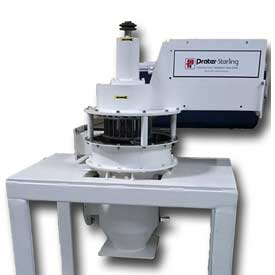Here is a sample of materials that have been used in our air classifier equipment (keep in mind that there are more dry free-flowing materials that can be easily processed in our air classifier that are not be listed below):
- Almond Hulls
- Aluminum Oxide
- Ammonium Salt
- Calcite
- Calcium Carbonate, Calcium Hydroxide, Calcium Oxide, Calcium Silicate, Calcium Stearate, and Calcium Tungstate
- Carbon
- Carbon Black
- Chemicals
- Coal Dust
- Cocoa Powder
- Corn Fiber, Corn Flour, Corn Starch and Corn Syrup Solids
- Detergent
- Dextrose
- Diatomaceous Earth
- Dry Nonfat Milk
- Expanded Perlite
- Faba Bean
- Flour
- Fritted Glass
- Fumed Silica
- Garnet
- Gelatin
- Graphite
- Ground Glass
- Ground Pea Hulls
- Gypsum
- Hydrated Alumina
- Hydrated Lime
- Iron Oxide
- Kaolin Clay
- Lentil Flour
- Magnesium Hydroxide and Magnesium Oxide
- Maltodextrin
- Manganese Dioxide
- Metal Alloys
- Mica
- Milo Grits
- Mung Bean
- Navy Beans
- Nylon Powder
- Oat Flour and Oat Groats
- Pea Flour
- Pea Protein
- Phenolic Resin
- Pinto Beans
- Polyamide – Imide
- Potassium Chloride
- Potato Starch
- Powder Coatings
- PVC Powder
- Quartz
- Silica Gel and Silica Sand
- Silicon Dioxide
- Sodium Bicarbonate
- Sodium Phosphate
- Soy Meal and Soy Protein
- Starch
- Sugar 8x, 10x, 12x (MAC-4)
- Toner
- Vanilla Bean
- Zeolite
- Zinc, Zinc Diacrylate, Zinc Oxide, and Zinc Stearate
- Zirconia

